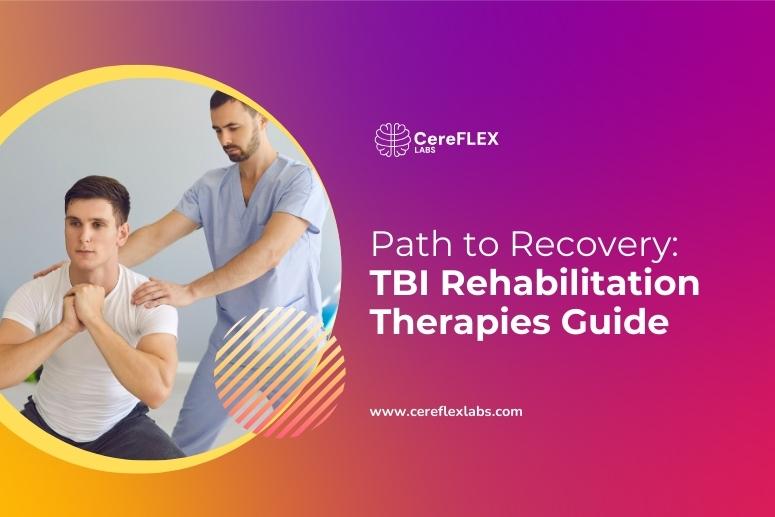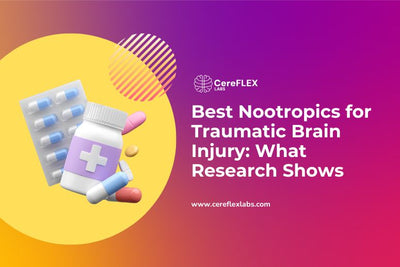Familiar routines suddenly feel unfamiliar, memories fade, and words become elusive, and simple tasks feel overwhelming. This is the reality for many people recovering from a traumatic brain injury (TBI). But while the journey may be challenging, recovery is possible.
This guide is more than just medical terminology and treatment plans—it’s a roadmap to healing. Whether you're a TBI survivor, a caregiver, or a healthcare professional, this resource will help you navigate the rehabilitation process and explore the many strategies available for brain recovery.
Together, let’s uncover the possibilities in TBI rehabilitation and take meaningful steps toward healing.
Understanding TBI and Its Impact
Traumatic brain injury (TBI) occurs when a sudden impact, jolt, or penetration disrupts normal brain function. The brain can be damaged in different ways, depending on the severity of the injury.
- Mild TBI often causes temporary changes to brain cells and can lead to concussion-like symptoms.
- Moderate to severe TBI may involve bruising, tears in brain tissue, bleeding, and permanent damage, potentially leading to long-term cognitive, physical, and emotional difficulties. In severe cases, TBI can result in coma, long-lasting disabilities, or death.
The impact of TBI depends not only on the type and severity of the injury but also on how quickly medical attention is provided and the person’s overall health.

Causes of TBI
Traumatic brain injuries typically occur due to external forces affecting the head or body. The severity and type of injury depend on the nature of the force and the circumstances involved.
Common causes of TBI include:
-
Falls: The leading cause of TBI, especially in older adults and young children. These can include falls from beds, stairs, ladders, or baths.
-
Vehicle-related collisions: Car, motorcycle, bicycle, and pedestrian accidents often lead to brain injuries.
-
Violence: Gunshot wounds, domestic abuse, child abuse, and other violent acts can cause TBIs. Shaken baby syndrome is a specific form of TBI in infants caused by violent shaking.
-
Sports injuries: Contact sports like football, hockey, soccer, and boxing, as well as activities like skateboarding, often lead to concussions or more severe TBIs, especially among younger athletes.
-
Explosive blasts and combat injuries: Common among military personnel, these injuries are caused by the shockwaves from explosions, which disrupt brain function.
TBI can also result from penetrating wounds, such as shrapnel or debris entering the brain, or from direct blows that cause the brain to move inside the skull.
Types of Traumatic Brain Injuries
Traumatic brain injuries (TBI) are classified based on how the injury affects the brain. There are two primary types: penetrating and non-penetrating TBIs.
Penetrating TBI
This occurs when an object pierces the skull and directly damages the brain. These are referred to as open TBIs. Examples include injuries from bullets, knives, or other sharp objects.
Blunt TBI
This type results from a strong force hitting the head, causing the brain to move within the skull. These are known as closed head TBIs. Blunt TBIs can occur from vehicle accidents, falls, blows to the head, explosions, or sports injuries.
Healthcare providers also categorize TBIs based on their severity:
-
Mild TBI (Concussion): Over 75% of all TBIs are mild. While they typically cause temporary symptoms, mild TBIs can still lead to long-term cognitive or emotional issues. Individuals with mild TBIs may face difficulties returning to normal activities such as work.
-
Moderate and Severe TBI: These injuries result in more significant, long-lasting health challenges, including loss of consciousness, cognitive impairments, and motor function problems.
What are the symptoms of a TBI?
The symptoms of a traumatic brain injury (TBI) vary based on the injury's severity and can affect different areas of cognitive, physical, and emotional functioning. The severity classification of TBI helps determine the treatment plan and expected recovery trajectory.
Mild TBI Symptoms
Mild TBIs, including concussions, may cause symptoms that appear immediately or develop hours or days later. While symptoms typically improve over time, some individuals may experience long-lasting effects. Most people recover within a few weeks, but symptoms can change during recovery.
Physical Symptoms:
- Sensitivity to light or noise
- Dizziness or balance problems
- Fatigue
- Headaches
- Nausea or vomiting (usually early on)
- Vision issues
Thinking and Memory:
- Difficulty concentrating or focusing
- Feeling "slowed down"
- Mental fog or grogginess
- Short-term or long-term memory issues
- Trouble thinking clearly
Social or Emotional Symptoms:
- Anxiety or nervousness
- Irritability or anger
- Heightened emotions
- Sadness
Sleep Issues:
- Sleeping less than usual
- Sleeping more than usual
- Difficulty falling asleep
Moderate or Severe TBI Symptoms
Moderate or severe TBIs often present more serious, long-term symptoms that evolve over time. These injuries can cause significant disruptions to physical and cognitive function.
Physical Issues:
- Unconsciousness lasting over 30 minutes (moderate TBI) or more than 24 hours (severe TBI)
- Coma
- Weakness in arms or legs
- Balance and coordination problems
- Hearing or vision difficulties
- Altered sensation (e.g., touch, temperature)
Thinking and Memory:
- Confusion
- Difficulty concentrating
- Short-term memory loss
- Difficulty thinking clearly
- Problems with communication
- Grogginess
Social or Emotional Issues:
- Anxiety, nervousness
- Irritability, anger
- Sadness or depression
- Aggression or impulsiveness
- Difficulty controlling behavior

What are the stages of recovery after a TBI?
Recovering from a traumatic brain injury (TBI) is a gradual and often challenging journey. Depending on the severity of the injury, survivors may progress through different stages of recovery, each focusing on various aspects of healing and rehabilitation. Here are the stages of recovery, from initial unconsciousness to long-term rehabilitation:
Coma: Deep Unconsciousness and Initial Healing
During a coma, a person is completely unconscious and does not respond to their environment. The brain may begin the healing process, but there is no movement or communication.
Duration: A few weeks.
Vegetative State: Reflexive Responses, No True Consciousness
In this state, individuals may appear awake, but they lack awareness. They may make reflexive movements, such as opening their eyes or reacting to pain, but do not show purposeful behavior.
Duration: Weeks or longer.
Minimally Conscious State: Early Awareness and Response
Individuals in this stage show some signs of awareness and may respond to commands or stimuli, though their responses are inconsistent.
Duration: Varies, with expected gradual improvement.
Post-Traumatic Amnesia: Memory Loss and Confusion
Survivors experience memory loss and confusion, struggling to recall past events and form new memories. Aggressive or inappropriate behaviors may also occur.
Duration: Ends when memory improves and daily events can be recalled.
Confused and Disoriented: Struggling to Focus and Communicate
At this stage, survivors remain confused and have difficulty concentrating. They may struggle to communicate or follow commands.
Duration: Several weeks.
Early Recovery: Improved Communication, Ongoing Memory Issues
Survivors may be able to follow simple commands and engage in brief conversations, but memory problems may persist, and they may not be fully aware of their issues.
Duration: Gradual improvement over weeks or months.
Routine Recovery: Gaining Independence with Supervision
At this stage, survivors can complete daily routines but may need assistance with task initiation and planning.
Duration: Several weeks to months.
Transition to Independence: Living with Minimal Support
Self-awareness improves, allowing survivors to live more independently. However, they may still face challenges in social situations and unexpected events.
Duration: Varies as independence increases.
Functional Independence: Mastering Daily Tasks
Survivors can manage both familiar and new tasks independently, though they may occasionally need assistance.
Duration: Varies as independence solidifies.
Full Recovery: Returning to Pre-Injury Functionality
In this final stage, survivors regain full independence, managing multiple tasks and adapting to changes. Cognitive processing may be slower, but survivors develop strategies to overcome these challenges.
Duration: Final stage of recovery, with survivors functioning at or near their pre-injury levels.
Key Rehabilitation Therapies for TBI
Recovering from a traumatic brain injury (TBI) often requires a combination of therapies targeting various areas of function, including physical movement, cognitive skills, and emotional health. Here’s a summary of key rehabilitation therapies essential for TBI recovery:

Physical Therapy
TBI survivors often experience difficulties with movement and coordination, especially when areas like the motor cortex, cerebellum, or frontal lobe are affected.
One of the ways to recover from TBI is through consistent physical therapy, which helps rebuild motor skills. Physical therapy can help improve mobility, strengthen muscles, and retrain movement patterns. These exercises activate neuroplasticity, the brain’s ability to form new connections, leading to better movement. However, repetitive exercises can be tedious, which is why gamifying physical therapy with fun activities can help make recovery more engaging and effective.
Treatment Focus: Walking, stretching, strength training, and balance exercises.
Occupational Therapy
Occupational therapy focuses on regaining independence through meaningful daily activities. By targeting activities the survivor cares about, therapy encourages consistent practice and supports brain healing.
In occupational therapy (OT), common tasks like dressing, bathing, eating, and other daily routines are practiced, but your OT will customize a rehabilitation plan based on your personal needs and goals. OT also includes techniques to adapt environments and help with independence.
Treatment Focus: Daily tasks, adaptive techniques, and modifying environments for improved independence.
Speech Therapy
Speech therapy is essential for those with communication difficulties after a TBI. This therapy helps improve speech, language, and cognitive skills, as well as address swallowing issues.
Cognitive-linguistic therapy focuses on memory, attention, and problem-solving, while speech therapy targets clear communication and language comprehension.
Treatment Focus: Speaking clearly, understanding language, improving memory, and managing swallowing difficulties.
Cognitive Rehabilitation
Cognitive rehabilitation aims to improve cognitive function, and cognitive longevity tools represent strategies that maintain and enhance cognitive abilities over time.
For TBI survivors, cognitive rehabilitation addresses common issues like memory loss, focus problems, and difficulties with decision-making or problem-solving. Through techniques like puzzles, logic games, and real-life scenarios, therapists help survivors strengthen thinking skills and learn to manage everyday tasks.
Treatment Focus: Mental exercises, memory techniques, attention training, and practices for cognitive rehabilitation activities.
Role of Nutrition and Supplements in TBI Recovery
A balanced diet, rich in supplements for brain healing and essential nutrients, can significantly boost brain health, aid in recovery, and enhance overall healing. Here’s how proper nutrition plays a crucial role in TBI recovery:
Reducing Inflammation
After a TBI, inflammation can worsen brain damage and slow recovery. Foods with anti-inflammatory properties, such as omega-3 fatty acids found in fatty fish, walnuts, and flaxseeds, help reduce inflammation and support the healing process.
Supporting Brain Function
TBI can affect thinking, memory, and mood. B vitamins, especially B12, are crucial for maintaining brain function. Sources of B12 include fish, eggs, dairy, and fortified cereals. Additionally, antioxidants from fruits and vegetables like berries and leafy greens protect brain cells and improve cognitive abilities.
Promoting Neuroplasticity
Neuroplasticity is the brain's ability to form new connections after an injury. Nutrients such as magnesium, zinc, and vitamin D support neuroplasticity and help restore brain function. Foods rich in these nutrients include nuts, seeds, whole grains, dairy, and fish for magnesium and zinc, and sunlight for vitamin D.
Supporting Gut Health
The gut-brain connection is vital for recovery. A healthy gut microbiome, supported by a diet high in fiber, fruits, vegetables, and probiotics (from foods like yogurt and sauerkraut), can enhance both brain function and overall health.
Energy Production
After a TBI, the brain requires a substantial amount of energy to heal. Complex carbohydrates, healthy fats, and lean proteins provide the necessary calories to meet energy needs and help repair damaged brain cells.
Support Systems in TBI Recovery
A strong support system is vital for recovery from traumatic brain injury (TBI). Emotional, practical, and psychological support all play key roles in facilitating the healing process.
Family and Caregivers
Family members and caregivers provide crucial daily care, assist with rehabilitation exercises, and offer emotional support. They help manage appointments and advocate for the survivor's needs. Their support can significantly reduce feelings of isolation and anxiety, creating a more positive environment for healing.
Support Groups
Support groups are invaluable for individuals with TBI and their families, providing an opportunity to connect with others facing similar challenges. Sharing experiences and gaining insights from others can offer emotional support and hope throughout the recovery process.
Social Connections and Mental Health Care
Maintaining social connections and seeking mental health care are critical for managing depression and anxiety, both of which can slow the recovery process. Additionally, the impact of stress on brain recovery should not be overlooked.
Chronic stress can disrupt neuroplasticity, the brain’s ability to heal, and impede overall recovery. Therapy and counseling can help survivors cope with emotional challenges, enhancing both psychological and physical recovery.
Conclusion
Recovering from a traumatic brain injury (TBI) is a unique journey for each individual. With the right rehabilitation therapies, personal care, proper nutrition, and strong support, survivors can heal and regain independence. While recovery may be challenging, effective therapies, meaningful social connections, and a holistic approach to brain health can make a significant difference.
Whether you are recovering from a TBI, supporting a loved one, or working in healthcare, understanding these key aspects can pave the way for a better recovery. Be patient, stay connected, and remember that recovery is possible with the right strategies and support.






